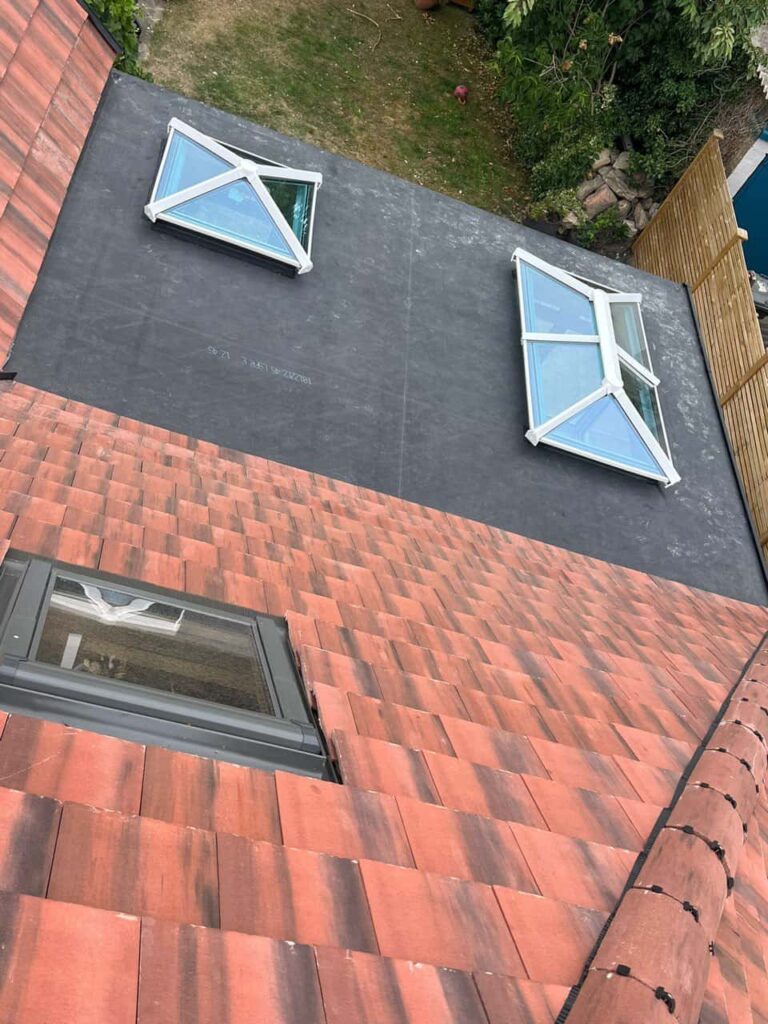Introduction: Regular roof inspections are essential for maintaining the integrity of your home in Haddenham. By conducting seasonal inspections, you can proactively identify potential issues and prevent costly roof leaks before they occur. At Haddenham Roofing Repairs, we understand the importance of thorough maintenance to ensure your roof remains in optimal condition throughout the year. Here’s a comprehensive guide on how to conduct a seasonal roof inspection for effective leak prevention:
1. Schedule Regular Inspections
- Timing: Perform roof inspections at least twice yearly, ideally in spring and autumn. These seasons are ideal as they precede the harsher summer and winter weather conditions.
- Professional Help: Consider hiring a qualified roofer for a thorough inspection, especially if you’re uncomfortable with heights or need more experience in roof maintenance.
2. Exterior Inspection
- Roofing Materials: Check for missing, cracked, or damaged shingles or tiles. Look for signs of wear and tear that could compromise the roof’s waterproofing.
- Flashing and Sealants: Inspect roof flashings around chimneys, vents, and skylights. Ensure they are securely in place and sealed to prevent water intrusion.
- Gutters and Downspouts: Clean gutters and downspouts of debris to ensure proper drainage. Clogged gutters can lead to water pooling on the roof, increasing the risk of leaks.
3. Interior Inspection
- Attic or Ceiling Inspection: Check the underside of the roof from inside your attic or ceiling. Look for water stains, dampness, mould growth and signs of potential roof leaks.
- Insulation and Ventilation: Ensure attic insulation is dry and in good condition. Check for proper ventilation to prevent moisture buildup, which can contribute to roof deterioration.
4. Tree and Branch Assessment
- Overhanging Branches: Trim back any tree branches touching or close to the roof. Falling branches during storms can cause physical damage to roofing materials and lead to leaks.
5. Check for Signs of Pests
- Nesting: Look for signs of pests, such as birds or rodents nesting on or near the roof. Nesting materials can block drainage and create entry points for water.
6. Document Findings
- Maintenance Log: Keep a detailed record of your inspections, noting any findings and actions taken. This log can help track the roof’s condition and guide future maintenance efforts.
7. Address Issues Promptly
- Repair or Replace: If you identify any issues during the inspection, such as loose shingles, damaged flashing, or gutter problems, address them promptly. Timely repairs can prevent minor issues from escalating into major leaks.
Conclusion: Conducting a seasonal roof inspection is a proactive approach to maintaining a leak-free roof and preserving the integrity of your home in Haddenham. By following these steps and staying vigilant, you can identify potential problems early and take corrective actions to prolong the lifespan of your roof.
Call us on: 01844 396 698
Click here to find out more about Haddenham Roofing Repairs
Click here to complete our contact form and see how we can help you with your roofing needs.

